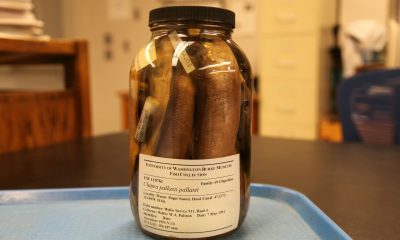By Gwyn Wright via SWNS
The disappearance of prehistoric species such as woolly mammoths, giant bison and ancient horses led to a surge in grassland fires, according to a new study.
The findings could help us understand how livestock can affect fires and climate change today, say, scientists.
Researchers made lists of when large grazing mammals went extinct and then compared them with records of fire activity from lake sediments at 410 sites across the world.
Continents that lost more grazing species, such as South America and North America, saw the sharpest rises in grassland fire activity while other continents which did not lose as many species, such as Australia and Africa, saw little change in grassland fire activity.
South America lost the most grazing creatures, at 83 percent of all species, followed by North America which saw 68 percent of grazers disappear.
via GIPHY
Meanwhile, Africa lost 22 percent of grazers and Australia lost 44 percent of grazers.
The mass extinction of the grazers, called ‘megaherbivores’, had huge impacts on the ecosystems where they had lived.
These included predator collapse and the loss of fruit-bearing trees that had depended on herbivores.
The scientists said ancient species which foraged on shrubs and trees in the woods, such as giant sloths, mastodons and diprotodons, died out in the same period but their extinction had less of an impact on fires.
However, in grasslands, grass-fuelled fires increased.
via GIPHY
Grasslands were transformed after the extinctions and new grazers, including livestock, eventually adapted to changed conditions.
Corresponding author Dr. Allison Karp said: “These extinctions led to a cascade of consequences.
“Studying these effects helps us understand how herbivores shape global ecology today.”
Senior study author Professor Carla Staver added: “This work really highlights how important grazers may be for shaping fire activity.
“We need to pay close attention to these interactions if we want to accurately predict the future of fires.”
The findings were published in the journal Science.

 Parenting6 days ago
Parenting6 days ago
 Lifestyle5 days ago
Lifestyle5 days ago
 Good News2 days ago
Good News2 days ago
 Broadcast1 week ago
Broadcast1 week ago
 Broadcast1 week ago
Broadcast1 week ago
 Health2 days ago
Health2 days ago
 Money1 week ago
Money1 week ago
 Environment1 week ago
Environment1 week ago






















